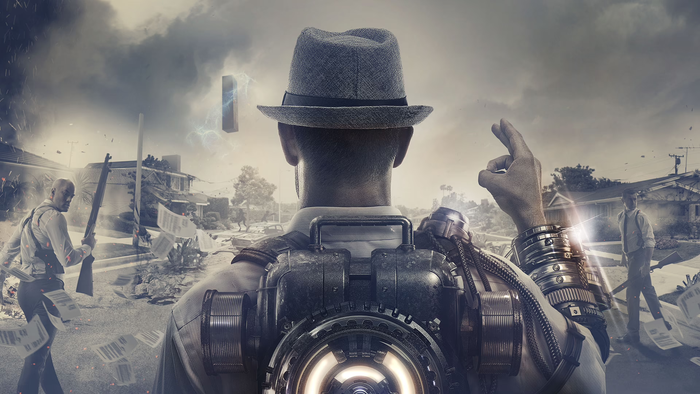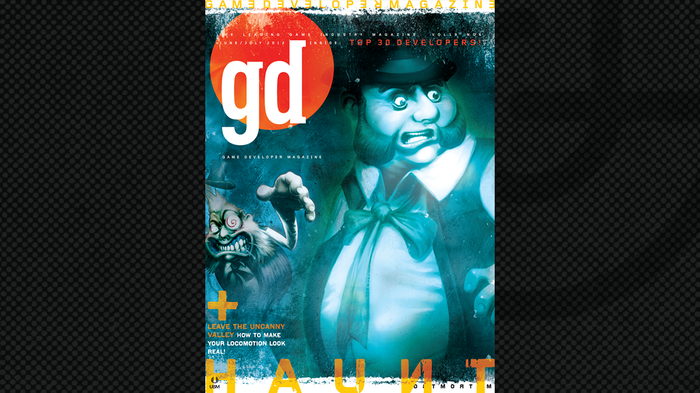Crafting the mobile-friendly atmospheric storytelling of Sky: Children of the Light
thatgamecompany's Eileen Hollinger and Tim Nixon sat down with Gamasutra to explain how the studio's visual storytelling style plays out in Sky and how it molds meaningful multiplayer moments.

Sky: Children of the Light is an unusual and atmospheric mobile multiplayer gameplay experiment from thatgamecompany. Unlike many games in that space, there is no fighting, no grinding, and no gatcha. It’s a game about flying, exploring, and communicating a mysterious, aerial world.
"Sky for me is a stunningly beautiful virtual theme park to brings you closer to your loved ones and inspire interactions that bring out the best in humanity," explains Tim Nixon, director of online experience at thatgamecompany. "It should be a little light in your day, a welcoming, inclusive environment that makes you feel like you belong."
He and thatgamecompany executive producer Eileen Hollinger, a former Riot Games and Funomena producer first drawn to games by her belief in the potential positive impact of the medium, sat down with Gamasutra to discuss the process of creating a game driven by visual and environmental storytelling, working meaningful and authentic multiplayer encounters into an evolving world, and exploring substantial gameplay without bringing combat or violence into the mix.
Sky is a game without many words to guide the player or communicate its mythic story. Wordless storytelling is an interesting and atmospheric choice, but it has its challenges. How did you do it?
Hollinger: thatgamecompany’s storytelling style has always tended toward environmental and visual storytelling as opposed to a linear narrative. During the development of Sky, the story of the world revealed itself through a long and iterative dialogue between narrative writers, designers, and artists, each being inspired by the other’s ideas. Sky’s lore is imbued throughout the game, exposed to the player through exploration, murals to be discovered in secret areas, and cinematic glimpses into character’s pasts as you grow your relationships.
We also like to leave a lot of space for the player to bring their own imagination and interpretation to the story by creating touchpoints and vignettes that entice the player to speculate about the mysteries of the world.
Nixon: That’s been an especially interesting challenge for mobile, because the sort of atmospheric style of storytelling that was used in Journey is harder to come across in a mobile format because the screen is smaller, you’re generally more distracted, and you might not have as long for a gameplay session. So there need to be layers there where your immediate goal is very clear, and that's the first breadcrumb that pulls you into the world, but then the game rewards you for paying closer attention to the animations, subtleties in the environment, and hidden secrets that flesh out the full backstory and meaning of the world.

Multiplayer is a big part of Sky. How does the experience change for multiplayer? Does it make more abilities available to the players, or help them out, how does that change the game? It seems that communication, and the ways that players are allowed to communicate, is a large part of the play. How did you arrive at the right balance between full, all-the-time chat and complete inexpressiveness?
Nixon: One of our core design pillars of the game was that everything should be better with others. Journey was a two player game, like a dance, where you were progressing through a linear narrative together. This game is a lot more complex in that not only can there be up to eight players in a level together, but those players can build very deep relationships with one another, gifting the light they collect to one another and unlocking all sorts of new interactions that could take weeks or months to develop. So relationships are the core of the game, and even the economy is based on generosity and the relationships you have with others.
Hollinger: Our goal was to create a meaningful arc for relationships to grow intimacy over time while balancing the basic communication needs for players to collaborate. Throughout the project, a central value we always kept in mind was “will this lead to meaningful and authentic interactions?” For example, we saw granting all-the-time chat from the start as something that ultimately devalued it in our game and reduced the quality of those conversations. Whereas having chat be an advanced relationship stage with a friend who you’ve come to trust and opt-in to each step of unlocking interactions leads to a richer dialogue with that person.
Sky is a flying game, a small but special genre. On one end you have games where you can just go wherever you want; on the other, you have complex simulations that as that you master a vehicle with specific aerial characteristics and instrumentation. Sky seems to be more on the accessible end of the spectrum. How does the flight work in your game, and what does that add to the experience?
Hollinger: Primarily we want flight to be accessible to anyone, to be a joyful experience, and to feel better with others. At the same time, we wanted to provide a mastery element where veteran players can develop a high level of skill in performing tricks and more precise movements. Players were also rewarded by a range of emotional and gameplay content depending on which realm they flew to, and if they reached there by collaborating with other players. There were certainly a lot of layers and consideration put into each stage.
Nixon: Early on flight included even more freeform, and we had this problem where anyone could really just go anywhere, and you felt super powerful from from the very beginning, which is a classic flying game problem. It also felt like you had nowhere to go, no power to develop, not much to feel good about growing as you progressed through the game. So the system we have now in the game challenges you to find these lost spirits, each of which adds to the power of your cape which you shepherd them through the world. This means your opportunity to explore and reach new places changes drastically on each loop through the game, and we also use this system to open up new levels that you didn’t have the power to access without the spirits’ help. So this ended up being a great way for us to make the game more replayable as well.
Your game is absent the traditional video game activity of fighting enemies. Absent what for many games is the "meat" of the experience, what does Sky offer, in terms of things to do? How do you make a game like this feel substantial?
Hollinger: One of the exciting opportunities games as a medium has is the spectrum of experiences to explore that can live at the center of a game for fun and engaging experiences. The notion that combat is the default substance for a game is something that we really aspire to shift. We’re also attempting to bring our games to a broader audience that doesn’t necessarily hold expectations about combat being a core mechanic.
Nixon: Yes, in fact, it's almost the inverse. The existence of combat is a turnoff. We’re already starting to hear stories from grandmas who are playing Sky with their grandkids, and that for us, using games to bring loved ones together in a safe, beautiful, and thought-provoking environment, is the goal.
Hollinger: As a studio we care deeply about exploring dynamics that encourage the brightest parts of humanity. We were interested in putting collaboration and authentic human connection as the core of the game. So really the substance in Sky comes from player’s relationships with one another, the social component is the meat of the game.
Nixon: Even all the puzzles, and quests, and exploring, and metagame, they’re all just ice breakers to social interaction. They are designed to give people an excuse to come together and work towards a common goal, and hopefully feel a connection and discover something about each other along the way.
In the interview with Geoff Keighley, you mentioned that Sky was intended to be a "constantly evolving" experience; what did you mean by that? How will Sky's world change over time?
Nixon: As a live service product, it’s crucial that Sky feels like a living, breathing world, where any one day that a player comes in there could be something new happening. That could be a new quest or a storyline, a little quirk of an existing level or spirit, or it could be the arrival of a whole new land or collection of spirits with all new quests to complete and outfits to collect. That’s another crucial design pillar for us, that there is something new to do every day, and a lot of those activities are focused around collaboration, reinforcing our central design pillar that all this “gameplay” is just an excuse to bring people closer together.

Hollinger: The collaborative and social play at the center of Sky is difficult to get right without collaborating with a large and live group of players. We spent a long time in beta working side by side with our players, and we expect to do the same now with our global audience as we improve both the game world and the player experience.
Nixon: We’ve built a whole new team that’s focused on supporting the community and making sure that their feedback makes it through to the developers, that we’re being super communicative about what we’re working on, and we’re looking closely at all the data and sentiment to help us make the game the best it can possibly be. We really do feel like we are just getting started with this.
Without giving too much away, the gameplay of Sky is of the circular variety, where players cycle through the "normal" game multiple times, resetting in the end in order to "ascend," and gain things that persist even through resets. This may be difficult to answer without spoiling things, but if you can, what does the player have to look forward to on additional "loops" through the game?
Nixon: All the greatest rewards (including ultimate relationship abilities) in the game rely on the player going through the very challenging finale of the game, reaching the summit to collect the most precious light, and then returning it back to the spirits. Their increased flight power will also mean each time they go through the game there will be more spaces to discover, more spirits to meet, and of course each loop through is made unique by the real people you share it with and the stories you make together.
About the Author
You May Also Like









